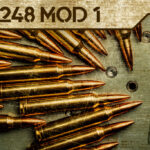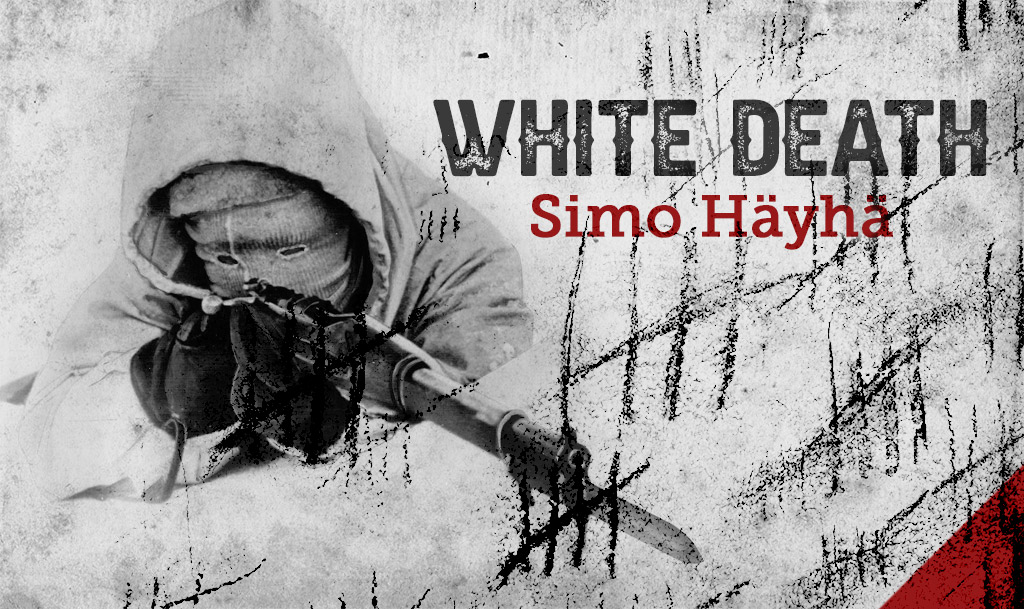

Simo Häyhä may not be a familiar name in the United States or many other parts of the world. But in Finland, he is a well-respected hero, and in the Soviet Union, he will forever be remembered as the infamous “White Death.”
Häyhä was a soldier in the Finnish army during what historians call the “Winter War.” The conflict began on November 30, 1939, when half a million Soviet Red Army troops invaded Finland after negotiations over a border dispute had failed.
Although the war lasted only 105 days, 98 of which Häyhä was active, the 34-year-old Finn sniper would walk away with 505 confirmed kills, making him one of the deadliest (if not the deadliest) snipers of all time.
During his 98 days of service on the battlefield, Häyhä moved about quietly and nearly invisibly, targeting Russian soldiers with lethal precision. Once killing 25 men in one day, Simo’s reputation as a sharpshooter soon reached the Soviet front lines, where they gave him the moniker “The White Death.”
Who Was Simo Häyhä?

Don’t let the smile fool you, Simo Häyhä was one of the most deadly snipers in history.
Häyhä was born in 1905 in the former Finnish region of Karelia. He grew up on a farm enjoying hunting, shooting, and snow-skiing. Häyhä’s skills as a sniper had been unintendedly developed during his youth as he went on hunting trips in the woods, staying close to nature.
Häyhä loved to hunt the skittish birds in the pine forests near his farm. These challenging game birds reacted to any sound or sudden movement, making it imperative that a hunter consider each situation, target, and terrain. He would have needed to develop excellent vision and an ability to recognize his targets quickly. Häyhä understood there are no sure-fire approaches in hunting, and he learned to adapt to each unique situation and condition.
Häyhä’s Training & Skillset
Häyhä’s father built on his son’s hunting skills by teaching him how to estimate distances to a target. This skill did not come naturally to young Simo, but he developed it over time with much practice. The boy would calculate the distance to an object and then step it off to see how close he had gotten. Eventually, he became consistently accurate, estimating within one or two steps at around 150 meters. At the same time, he was also learning how wind, rain, and conditions in the woods would affect his shooting.
Most of the skills Häyhä acquired as a hunter he would later apply on the battlefield. Häyhä learned that when a hunter shoots at his target, he must continue to observe the impact. If the first shot does not kill the animal, it will attempt to escape if at all possible. It will also try to defend itself until it’s dead.
These lessons apply when hunting game, he realized, and when pursuing humans on the battlefield. Simo’s experiences as a hunter served him well as a sniper.
Simo Häyhä Rifle

The Mosin Nagant M28/30 variation is known for its exceptional barrel quality and accuracy.
As a hunter before the war, Simo Häyhä used the bolt-action Mosin-Nagant M/28-30 rifle. Chambered for the Finnish 7.62x53R round, a design based on the Russian 7.62×
His rigorous preparations enhanced Häyhä’s skill. At night he would practice his various firing positions, making any improvements he deemed necessary. His dedication to shooting bordered on the obsessive–he cleaned his rifle often and performed routine maintenance on it before and after each mission. And he meticulously kept his weapon’s sights adjusted to 150 meters, the traditional distance for combat during the war.
Simo Häyhä On The battlefield
Simo’s unique skills and fanatical preparation turned him into a nightmare for enemy troops. But just days before the end of the Winter War, an explosive bullet from a Red Army soldier struck him in the jaw, effectively ending his war participation. He lapsed into a coma and did not awaken until after peace was declared.
The bullet had removed parts of his upper and lower jaw, along with his left cheek. After 14 months of recovery and 26 surgeries, Häyhä was left with permanent scarring, constant pain, and problems with his speech. But he also left a legacy as one of Finland’s towering heroes.
The Greatest Finnish Sniper
Simo Häyhä was a small, humble man who was in tune with nature and loved to hunt. He learned early on how to stay hidden, he was comfortable with a basic weapon, and he was more than willing to be alone. All these assets combined to make him one of the most successful snipers who ever lived.
During the war, Häyhä spent almost all of his time on the front line. Yet, he claimed never to have been afraid. He was confident in his abilities and continued to find new ways to stay hidden and fool the enemy. He treated being a sniper as he would any other job. Like any excellent employee, he was always looking to improve.
Life After The War

Simo Häyhä remained an avid hunter and outdoorsman after the Winter War ended.
Despite his serious wounds, Häyhä wanted to fight against the Soviets in World War II. His injuries were much too severe for Finnish command to allow it. Instead, he returned to his farm. His feats in the Winter War were legendary in Finland, making him a reluctant celebrity. With his facial scars and inability to speak clearly, it isn’t hard to understand why he preferred his own company. As one of his friends explained: “Simo spoke more with animals in the forest than with other people.”
Shortly before his death, he shared his most valuable insight with his biographer, Tapio Saarelainen:
“War is not a pleasant experience, but who else would protect this land unless we are willing to do it ourselves?”
-Simo Häyhä
Simo Häyhä never married and had no children. Until he moved into the Kymi Institute for Disabled Veterans in 2001, he had lived alone. He died there in 2002 at the age of 96.


